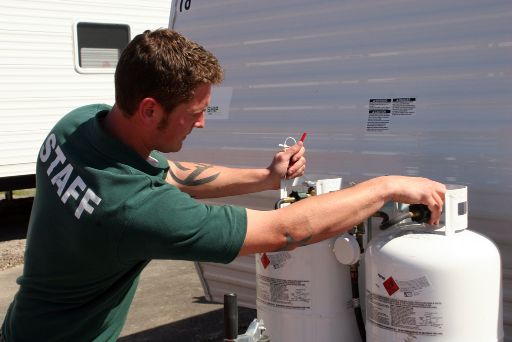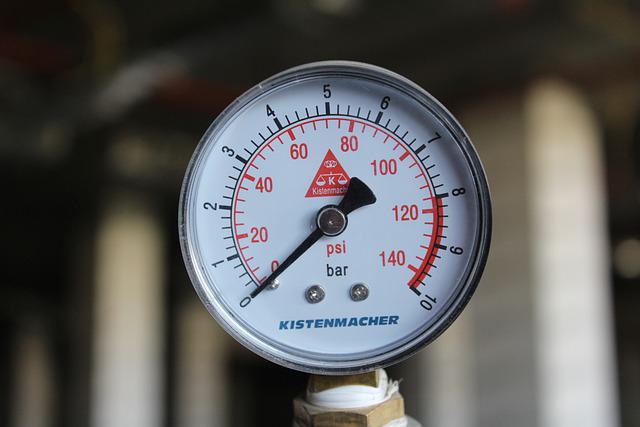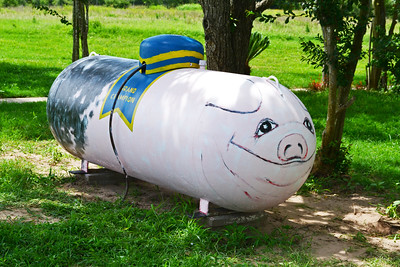
If you have a propane tank for your home, you may be wondering what to do with it during the winter months. There are a few things you can do to make sure your propane tank is ready for winter.
- If you have a propane tank, it’s important to keep it covered in order to prevent ice and snow buildup. A plastic tarp is an inexpensive and effective way to do this. Just make sure that the tarp is securely fastened so that it doesn’t blow away in the wind. In addition, it will keep the tank clean and free of debris.
If you’re not sure which size or type of tarp to get, be sure to ask your local propane supplier for their recommendation. Once you have your tarp, simply drape it over the top of the tank and secure it in place with some heavy-duty ties or bungee cords. By taking these simple steps, you can help ensure that your propane tank stays in good condition all winter long. - As the weather starts to cool down and the leaves begin to fall, it’s important to make sure your propane tank is in good working order. An annual maintenance appointment before the winter months can help ensure that your tank is running efficiently and won’t have any unexpected breakdowns. During your appointment, a technician will clean and inspect your tank, as well as perform any necessary repairs or replacements.
This is also a good time to discuss any concerns you may have about your furnace with the technician. Making an annual maintenance appointment for your tank is a simple way to avoid costly repairs or replacements down the road. It’s also a good opportunity to ask any questions you may have about your tank and get peace of mind knowing that it’s ready to keep you warm all winter long. - If you use propane to heat your home, it’s important to make sure that you have enough gas throughout the winter months. One way to do this is to keep your propane tank full or at a good level. If you run out of propane, it can be difficult and expensive to get more. Keep an eye on your propane tank and make sure that it doesn’t run low.
You may want to consider getting a propane monitor to help you keep track of your gas levels. In addition to keeping your propane tank full, you should also take steps to protect it from the cold weather. Make sure that your tank is well insulated and that there is no risk of it freezing. If you’re not using your propane, you can turn off the gas supply to your home to prevent any leaks.
How to winterize a propane tank
If you have a propane tank that you use for heating your home or other purposes, you will need to winterize it to protect it from the cold weather. Here are some tips on how to winterize a propane tank:
- Drain the tank completely and then rinse it out with clean water.
- Fill the tank with an anti-freeze solution.
- Close the tank’s valve and then disconnect it from the propane line.
- Store the tank in a cool, dry place.
- Check the tank regularly during the winter to make sure that it is still full of the anti-freeze solution.
Propane tank cold temperature limit
The temperature of a propane tank can affect the pressure inside the tank. When the temperature outside is cold, the propane inside the tank can become pressurized and may leak from the tank. It is important to know the cold temperature limit for your propane tank so that you can avoid leaks and keep your propane safe to use.
The cold temperature limit for a propane tank is -44 degrees Fahrenheit. This means that if the temperature outside is colder than -44 degrees, you should not use your propane tank. If you do use your propane tank in cold weather, it is important to monitor the pressure inside the tank so that you can prevent a leak.
If you have a propane tank that is leaking, it is important to call a professional to repair the leak. Do not attempt to repair a leaking propane tank yourself. Propane is a flammable gas, and it can be dangerous if it leaks into your home or garage. If you smell gas, leave the area immediately and call a professional.
Pre-Winter Preparation
As the colder months approach, preparing your propane system is essential to ensure a safe and uninterrupted supply of fuel for heating and other needs. Here’s a guide to get your propane system ready for winter.
A. Inspecting Your Propane Tank for Leaks or Damage
- Visual Inspection: Look for signs of rust, dents, or any other damage that might have occurred during the warmer months.
- Leak Test: Perform a simple leak test using a soapy water solution over connections and valves, looking for bubbles that indicate a leak.
- Regulator Check: Ensure the regulator is functioning correctly and not showing signs of wear.
- Remediation: If any damage or leaks are found, it is crucial to have them repaired by a professional before winter.
B. The Importance of Proper Propane Levels Before Winter Sets In
- Avoiding Runouts: Ensure your tank is adequately filled before winter as runouts in severe weather can be dangerous and may lead to a system needing to be re-pressurized and checked for leaks by a technician.
- Propane Contracts: Consider a fill-up schedule with your supplier or a pre-buy contract to lock in prices and ensure regular deliveries.
- Monitoring Usage: Understand your past usage patterns to estimate how much propane you might need to have on hand as the cold weather starts.
C. Scheduling a Professional Inspection or Maintenance Check
- Annual Inspection: Have a qualified technician inspect your propane system to ensure all components are ready for the demands of winter.
- Maintenance Tasks: Technicians should check the integrity of the tank, the status of the fuel lines, and the ventilation of all appliances.
- Safety Protocols: Ensure the professional reviews safety protocols with you, such as how to turn off the propane supply and what to do in the event of a leak.
Preparation is key to a stress-free, safe winter when it comes to propane usage. By taking proactive steps to inspect and maintain your propane tank, ensuring you have a sufficient supply of propane, and seeking professional services when necessary, you can confidently rely on your propane system to function smoothly throughout the cold season.
Can propane tanks get too cold?
If it gets that cold or colder, pressure inside your propane tank will drop, eventually reaching a point where it is too low to effectively power your appliance. This is because the propane inside the tank is converted to liquid when it gets cold (less than -44F).
As the temperature outside drops, the pressure inside your propane tank will also drop. If it gets cold enough, the pressure will reach a point where it is too low to effectively power your appliance. This can be a problem if you rely on propane for heat or hot water. There are a few things you can do to prevent this from happening.
Make sure your propane tank is properly insulated. This will help keep the temperature inside the tank consistent, even as the temperature outside fluctuates. Keep your propane tank full. A full tank is less likely to be affected by changes in temperature than an empty one. If you know that the temperature is going to drop significantly, contact a technician for inspection. This is to ensure that tank is in good condition through the winter months.
Usage Tips During Winter
The winter season often brings increased reliance on propane-fueled appliances for heating and cooking. Being mindful of how to safely operate these appliances, monitor fuel levels, and adjust usage can ensure comfort and safety throughout the colder months.
A. Operating Appliances Safely in Winter Conditions
- Ventilation: Ensure all propane appliances have adequate ventilation to prevent carbon monoxide buildup, particularly as homes are sealed tighter against the cold.
- Safety Check: Before the onset of winter, have all propane appliances inspected by a professional to ensure they are operating correctly.
- Clear Exhaust Vents: Regularly check and clear any snow or ice from appliance vents, flues, and chimneys to prevent blockages.
- Carbon Monoxide Detectors: Install and regularly test carbon monoxide detectors to quickly identify any dangerous malfunctions.
B. Monitoring Propane Levels and Consumption Patterns
- Regular Gauge Checks: Frequently check the propane tank gauge to monitor fuel levels. Anticipate more frequent refills in colder months.
- Track Consumption: Keep records of how much propane you use during peak periods to better predict future needs.
- Adjust Orders: Contact your propane provider to adjust delivery schedules based on your monitored usage patterns to ensure you never run low.
C. Adjusting Usage for Efficiency and Safety
- Thermostat Management: Keep thermostats at a consistent, moderate temperature to manage consumption. Avoid large fluctuations which can lead to inefficient fuel use.
- Insulation Upgrades: Improve home insulation to reduce the need for excess heating.
- Proper Appliance Use: Only use appliances for their intended purposes—avoid using ovens and stoves for room heating.
- Emergency Plan: Develop a plan for what to do in case of a fuel shortage, appliance breakdown, or extreme weather event that could impact fuel delivery.
By following these tips, you can maintain a safe and comfortable environment in your home during winter while efficiently managing your propane usage. Always prioritize safety by ensuring appliances are well-maintained and by monitoring your propane levels to avoid running out in the cold months.
Dealing with Freezing Temperatures
Propane, like many other substances, can be affected by extreme cold, even though its freezing point is well below the temperatures typically experienced in most inhabited places. Nonetheless, the tank and the equipment can be compromised by freezing temperatures.
A. How to Prevent Your Propane Tank from Freezing
- Maintain Adequate Fuel Levels: A fuller tank will have higher internal pressure, which can prevent freezing. Keep the tank at least 30% full.
- Insulation: Use a tank blanket or heater specifically designed for propane tanks to keep it at an operational temperature.
- Windbreaks: Establish barriers to protect the tank from harsh winds which can lower the temperature around the tank.
- Sun Exposure: Position the tank to receive direct sunlight during the day, as this can help keep the tank warmer.
- Regular Use: Regular gas flow can prevent freezing. If the tank is for a seasonal property or sporadic use, regular checks are crucial.
B. The Use of Antifreeze Products and Their Safety
- Antifreeze Products: There are antifreeze products made specifically for propane tanks. These are often methanol or isopropyl alcohol, which are added to the tank by a professional to prevent freezing.
- Safety Concerns: Antifreeze products for propane should only be handled by professionals due to the precise requirements and the risks of handling flammable substances.
- Environmental Considerations: Be aware of the environmental impact of antifreeze products and inquire about eco-friendly options.
C. Emergency Measures if a Tank Appears to be Frozen
- Do Not Apply Direct Heat: Never use a direct flame or high heat to thaw a propane tank, as this could cause damage or an explosion.
- Professional Assistance: If you suspect that your tank or regulator has frozen, contact your propane supplier immediately. They have the proper tools and training to safely thaw the equipment.
- Avoid Using Appliances: Don’t attempt to use your propane until the issue has been resolved, as this could cause damage or be dangerous.
Preventative measures are key when it comes to handling propane tanks in freezing temperatures. Proper tank care, positioning, and monitoring can mitigate most issues associated with cold weather. However, if you suspect that your tank is compromised due to freezing, always err on the side of caution and seek professional help.
Maintenance and Care During Cold Weather
A. Regular Maintenance Tasks During Winter
Regular maintenance of your propane tank during winter months is crucial for ensuring safety and efficiency. Here’s what should be on your checklist:
- Visual Inspections: Regularly check for signs of wear, rust, or damage.
- Gauge and Valves Check: Ensure the gauge is working correctly and that all valves operate smoothly.
- Leak Tests: Conduct a soap solution test to check for leaks, especially after a refill or a significant drop in temperature.
- Regulator Checks: Make sure the regulator is free of ice and snow and is functioning properly.
- Ventilation: Clear any snow or debris blocking the tank’s vents.
B. Dealing with Snow and Ice Accumulation
Snow and ice can pose significant risks to the safety and functionality of your propane tank.
- Clearing Snow: Gently remove snow from the tank with a broom rather than a shovel to prevent damage.
- Avoiding Ice: Do not pour hot water on the tank to melt snow or ice, as the extreme temperature difference can damage the tank.
- Accessibility: Keep a clear path to your tank to maintain accessibility for inspections, maintenance, and deliveries.
C. When to Call a Professional for Help
There are certain situations when it’s essential to seek professional assistance:
- Suspected Leaks: If you smell gas or suspect a leak, evacuate the area immediately and call your propane supplier or fire department.
- Irregular Functioning: If appliances aren’t functioning properly or if you hear strange noises from your tank or lines, a professional should inspect the system.
- Post-Storm Inspection: After severe weather, have a professional check for potential damage or issues caused by the storm.
- Annual Inspection: Schedule an annual inspection with a qualified technician to ensure your propane system is ready for the winter.
Regularly maintaining your propane tank and being alert to the conditions that warrant professional help can prevent many common problems associated with winter weather. Always prioritize safety and never attempt repairs that you are not qualified to handle.
Refilling Your Tank During This Time of the Year
A. The Optimal Time for Refilling Your Tank
The best time to refill your propane tank in winter is before it dips below a 30% fill level. This threshold is recommended because it provides a buffer against running out of gas, particularly during periods of heavy usage that are common in colder weather. Additionally, scheduling a refill when your tank is at this level allows for flexibility in case there are delays due to weather or high demand. It’s also beneficial to monitor the weather forecasts; if a significant drop in temperature or a severe storm is expected, you may want to schedule a refill earlier to ensure you have enough propane to last through potentially challenging conditions.
B. Finding Reliable Propane Suppliers That Operate During Winter
To find dependable propane suppliers that operate effectively during winter months, consider the following:
- Local Recommendations: Talk to neighbors or local businesses to find out which suppliers they rely on during the winter.
- Service Reviews: Check online for customer reviews that specifically mention winter reliability and customer service.
- Emergency Services: Make sure the supplier offers emergency refill services and has a clear policy for delivery during adverse weather conditions.
- Customer Support: Reliable suppliers should have responsive customer service that can assist with scheduling and provide guidance for winter propane management.
C. Safe Transportation and Handling of Propane Refills
If you’re handling small propane cylinders (as opposed to larger, stationary tanks that are serviced by delivery trucks), it’s crucial to transport and handle them safely in winter:
- Secure Transportation: When transporting cylinders in a vehicle, ensure they are well-secured in an upright position and that the vehicle is well-ventilated.
- Avoid Indoor Storage: Never store propane cylinders indoors or in enclosed spaces, such as garages or basements, where gas could accumulate if a leak occurs.
- Safety Equipment: Use gloves and protective gear when handling propane cylinders in the cold to prevent frostbite or injury.
- Professional Delivery: For larger tanks, it’s best to rely on professional delivery services, as they have the proper equipment and training to handle the tanks safely under winter conditions.
- Post-Delivery Inspection: After any refill, take the time to inspect the tank, the connections, and the area around it for any issues that could be exacerbated by cold weather, such as leaks or structural compromises.
Conclusion
Heading into winter, if you’re a propane user, a bit of planning goes a long way. Checking for leaks, making sure your tank is full, and getting a pro to look over your system aren’t just good ideas—they’re must-dos to keep your home cozy and safe.
Keeping an eye on how much propane you use and getting your tank topped up before the cold really hits can save you a lot of headaches. And simple things like keeping the snow off your tank and making sure your heaters are working right are easy to do and make a big difference.
Remember, taking these steps means you won’t have to worry when the temperature drops. You can relax, knowing your home is ready for the cold. With your propane needs sorted, you can enjoy the winter without any nasty surprises. So, take the time now to get things in order, and then sit back and make the most of the season.

Mike is an experienced propane technician with over 15 years of professional experience in the field. He has dedicated his career to helping customers with their propane needs, from installation to maintenance and repair. Together with Jeremy, he co-founded this website to provide useful information and guidance to customers seeking reliable propane services.




